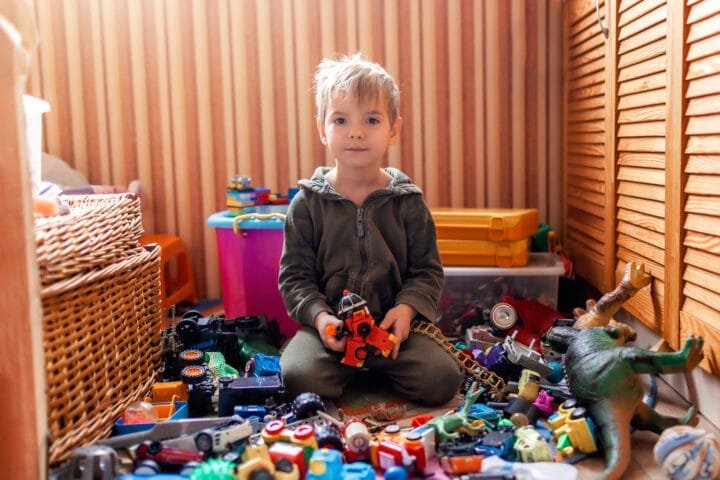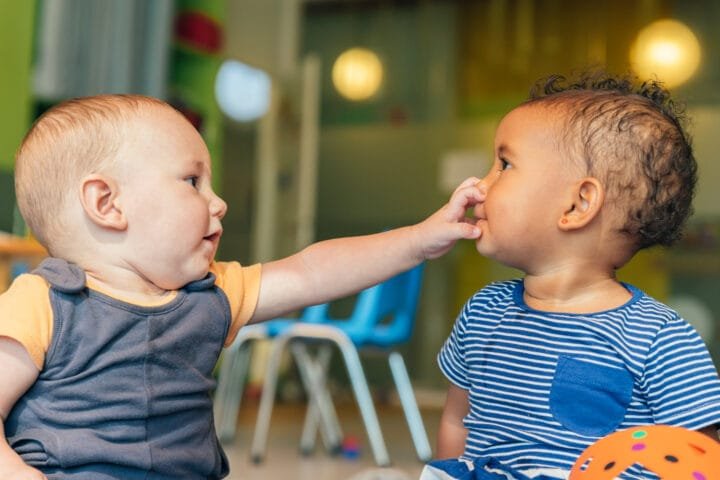Are Parents Reading Children’s Text Messages an Invasion of Privacy or Protection?
Last Tuesday night, while my 13-year-old daughter was in the shower, her phone buzzed on the kitchen counter. I glanced over—just a reflex, really—and saw a text preview that made my heart skip: “don’t tell your mom about Saturday…”
Before I could think twice, I’d swiped open her messages.
Twenty minutes later, I sat there, stomach churning with guilt, having read not just that conversation but dozens more. Did I find anything dangerous? No. What I discovered instead was something far more concerning: I had just shattered the trust between us.
According to recent research, I’m not alone in this parental betrayal. A shocking 61% of parents admit to reading their children’s private messages without permission. But should we be doing this? And if so, when? The answer isn’t as straightforward as you might think.
The Great Text Message Debate: Privacy vs. Protection
When it comes to digital parenting, few topics spark more heated discussions than text message monitoring. The battle lines are clearly drawn between two camps: those who believe parental supervision trumps privacy, and those who see privacy invasion as a relationship killer.
“Parents today face challenges no generation before has encountered,” says Dr. Maria Gonzalez, child psychologist and digital parenting expert. “We’re navigating uncharted territory where the stakes—exposure to predators, cyberbullying, inappropriate content—feel incredibly high.”
This tension creates the perfect storm for parental anxiety. We want to protect our children from very real digital dangers while also respecting their growing need for independence. The problem? These two goals often seem mutually exclusive.
The Digital Landscape Our Kids Navigate Daily
Let’s be honest about what our children face online. Today’s average teenager sends over 3,000 texts per month, that’s 100 messages daily. Their digital world is vast and, for many parents, largely invisible.
Within these spaces lurk legitimate concerns. One in three teens reports experiencing cyberbullying. Approximately 40% admit to sharing personal information with strangers online. These aren’t just statistics—they’re our children’s lives.
As Monica, a mother of two from Seattle, told me: “I found out my son was being pressured to share inappropriate photos only because I happened to glance at his phone when he left it unlocked. Was checking his messages an invasion of privacy? Absolutely. Do I regret it? Not for a second.”
When Safety Trumps Privacy: Justifiable Monitoring
There are legitimate reasons parents might need to check their child’s text messages. The key word here is need—not want, not curiosity, not convenience.
Lisa Henderson, a family therapist with twenty years of experience, explains: “When a child’s safety is genuinely at risk, parents have not just a right but a responsibility to intervene. However, this should be the exception, not the rule.”
So, when might checking texts be warranted?
Age Matters: Developmental Considerations
For younger kids just entering the digital world, closer supervision makes sense. An 8-year-old with their first phone needs different boundaries than a 16-year-old.
“I check my 10-year-old’s messages regularly, and he knows it,” says James, a father of three from Chicago. “We’ve agreed that as he demonstrates responsibility, he’ll earn more privacy. It’s a steppingstone approach.”
This gradual release of control aligns with child development research. Children need increasing autonomy as they mature, with digital privacy becoming more important during the teenage years when identity formation happens.
Red Flags That Warrant a Closer Look
Sometimes, behavioral changes signal trouble brewing beneath the surface. Warning signs that might justify looking at your child’s messages include:
- Sudden withdrawal from family and friends
- Significant mood changes or emotional outbursts
- Declining grades or school avoidance
- Secretive behavior around their phone
- Sleep disturbances or appetite changes
When 14-year-old Zoe suddenly began hiding her phone and staying up until 3 am, her mother Sarah noticed. “After weeks of trying to talk to her, I finally checked her messages. She was being blackmailed by someone threatening to share altered photos of her. I’m thankful I looked, even though it wasn’t easy to admit to her.”
The Hidden Costs of Surveillance: When Monitoring Backfires
While protection motivates most parents, the consequences of privacy invasion run deep. Research from the University of Pennsylvania found that teenagers whose parents regularly checked their messages without permission reported significantly higher levels of family conflict and were more likely to engage in secretive behavior.
“When I discovered my mom had been reading my texts, I felt violated,” says 17-year-old Alex. “I started using apps she didn’t know about and deleted everything important. We didn’t talk for weeks.”
This reaction isn’t unusual. Digital privacy invasion often creates the exact scenario parents hope to avoid children who become more secretive, not less.
Trust: The Casualty of Covert Monitoring
The foundation of healthy parent-teen relationships is trust. When we secretly monitor our children’s communications, we communicate a powerful message: I don’t trust you, and you can’t trust me.
Dr. Kenneth Burton, adolescent psychiatrist and author of “Connected Parenting,” explains: “The developmental task of adolescence is identity formation and separation. When parents undermine privacy, they’re essentially saying, ‘You don’t deserve boundaries,’ which conflicts with teenagers’ core psychological needs.”
The research backs this up. Adolescents who feel their privacy is respected demonstrate better emotional regulation, higher self-esteem, and stronger family bonds than those whose privacy is routinely violated.
Technological Whack-a-Mole: The Futility Factor
Let’s be practical for a moment. Even if you justify reading your teens’ texts, the strategy is increasingly ineffective. Today’s teenagers use multiple platforms for communication—many parents haven’t even heard of.
When monitoring becomes excessive, teens simply migrate to more private channels. They create fake accounts, use ephemeral messaging apps like Snapchat, communicate through gaming platforms, or employ code language with friends.
“My parents installed monitoring software on my phone,” admits 16-year-old Mia. “So my friends and I just talk through Discord now. My parents think they know everything, but they’re seeing maybe 10% of my conversations.”
This technological arms race creates an illusion of security while actually pushing risky behavior further underground and outside parental awareness.
The Middle Path: Transparent Monitoring Approaches
Between invasive surveillance and complete hands-off parenting lies a more thoughtful approach: transparent monitoring with appropriate boundaries.
“Open communication yields much better results than sneaky surveillance,” says family counselor Damien Rodriguez. “When children understand the why behind monitoring and have input in the process, they’re more likely to respect the rules.”
Here’s how this balanced approach might work:
Setting Clear Expectations from Day One
Before handing over that first phone, establish clear guidelines. What platforms are permitted? What information shouldn’t be shared? When are phones off-limits?
Create a family technology agreement that outlines:
- Which apps are allowed
- Time limits for device use
- Expectations around privacy
- Consequences for misuse
- Parental monitoring parameters
Most importantly, make expectations crystal clear: “We may occasionally review your messages, and here’s why.”
Sara Jensen, mother of twin 12-year-olds, implemented this approach: “We created our tech agreement together. They know I’ll sometimes check their messages, but I always tell them when I’ve looked. The transparency makes all the difference—they don’t feel spied on because nothing happens behind their backs.”
Age-Appropriate Monitoring That Evolves
Effective digital parenting evolves as children mature. A graduated approach might look like:
Ages 8-10: Full access to messages, regular checks, parent approval for new contacts Ages 11-13: Periodic checks with advance notice, discussion about content discovered Ages 14-16: Spot checks only with specific concerns, focus shifts to ongoing conversations Ages 17+: Minimal monitoring, emphasis on self-regulation and good judgment
This evolutionary approach acknowledges the developmental reality that privacy needs increase with maturity, while still maintaining appropriate oversight.
The Power of Ongoing Conversations
Here’s what actually works better than reading your kid’s texts: talking about digital citizenship regularly. Not lectures—real conversations.
“We have ‘tech talks’ every Sunday night,” explains Miguel, father of three teenagers. “We discuss everything from cyberbullying to privacy to what’s trending online. These talks have been way more effective than any monitoring software I could install.”
Conversation starters that build digital trust might include:
- “What’s the coolest thing you’ve seen online this week?”
- “Has anyone ever sent you something that made you uncomfortable?”
- “If you could change one thing about social media, what would it be?”
- “What do your friends do when someone sends something inappropriate?”
These discussions build the critical thinking skills children need far more effectively than surveillance ever could.
When Trust Is Broken: Rebuilding After Privacy Invasion
What happens when you’ve already crossed the line? Perhaps you’ve read your child’s messages without permission and now face the fallout. The path forward isn’t easy, but relationship repair is possible.
The Power of a Genuine Apology
“I messed up big time,” admits Theresa, mother of 14-year-old Kayla. “I read through all her texts when she was at soccer practice. When she found out, she was devastated. I had to make my mistake completely.”
A proper apology includes:
- Acknowledging the specific violation
- Expressing genuine remorse
- Explaining your concerns without justifying the breach
- Outlining how you’ll respect boundaries moving forward
- Asking what they need to rebuild trust
Honesty of this approach can transform a betrayal into a growth opportunity for your relationship.
Creating New Boundaries Together
After a privacy breach, involving your child in creating new monitoring guidelines empowers them and demonstrates respect.
Family therapist Amara Winston suggests: “Ask them to help design a system that addresses your safety concerns while respecting their privacy needs. When teens participate in creating boundaries, they’re more likely to respect them.”
This collaborative approach might include:
- Agreeing on specific concerns that warrant checking messages
- Establishing a notification system before any monitoring occurs
- Creating a regular check-in schedule instead of random surveillance
- Defining clear privacy zones that remain off-limits
The Legal and Ethical Dimensions of Message Monitoring
The question isn’t just about what works, it’s also about what’s right. Both legal and ethical considerations come into play when accessing a child’s private communications.
What the Law Says About Parental Monitoring
Legally speaking, parents generally have the right to access their minor children’s digital communications. As the account holders and legal guardians, parents maintain authority over how children use devices they provide.
However, legal rights don’t automatically make actions ethical. As children mature, the moral considerations around privacy become increasingly important, even when legal authority remains unchanged.
The Ethics of Digital Privacy for Children
Ethical monitoring considers:
- The child’s age and maturity
- The presence of genuine safety concerns
- The potential impact on the parent-child relationship
- Whether less invasive alternatives exist
- How monitoring aligns with broader family values
“Just because you can legally read your 16-year-old’s messages doesn’t mean you should,” advises family ethicist Dr. Leah Thomson. “Ethical parenting requires balancing protection with respect for emerging autonomy.”
Building Digital Resilience: The Ultimate Goal
The end game isn’t perfect monitoring—it’s raising digitally resilient kids who can navigate online challenges independently. This skill-building approach focuses on developing internal safeguards rather than relying solely on external surveillance.
Teaching Critical Digital Skills
Instead of monitoring every message, focus on equipping your child with these essential skills:
- Critical evaluation: Help them question what they see online and identify potential manipulation or deception.
- Boundary setting: Practice saying no to inappropriate requests and recognizing when interactions feel uncomfortable.
- Problem-solving: Discuss strategies for handling difficult online situations before they occur.
- Help-seeking: Ensure they know when and how to get adult assistance without fear of judgment or device confiscation.
As Rachel, mother of three teens, discovered: “When I stopped obsessing over monitoring their messages and started teaching them how to handle tough situations, they actually started coming to me more often when something fell off.”
Creating a Safety Net Beyond Surveillance
True digital safety requires more than message monitoring. Build a comprehensive approach that includes:
- Open family communication where difficult topics are welcomed
- Multiple trusted adults your child can turn to
- Regular check-ins about online experiences
- Awareness of your child’s digital world without excessive intrusion
- Clear values around digital citizenship and respect
This safety net approach creates protection through connection rather than surveillance.
Finding Your Family’s Digital Sweet Spot
There’s no universal answer to whether reading your child’s texts is appropriate. Each family must navigate this terrain based on their unique circumstances, values, and children’s needs.
Consider these questions when determining your approach:
- What are my specific safety concerns, and are they based on evidence?
- Does my child demonstrate good judgment in other areas?
- Have there been previous concerning incidents online?
- What does my child need developmentally at this stage?
- How will my monitoring decisions affect our relationship long-term?
The answers will help craft a monitoring approach tailored to your family’s reality.
Real Families, Real Solutions
Here’s how three different families found their monitoring balance:
The Jacksons implemented “phone-free zones” throughout their home and regular device check-ins rather than message monitoring. “We focus on when and how technology is used, not policing every conversation,” explains father Brandon.
The Lopezes use a graduated system where their three children earn privacy privileges through demonstrated responsibility. “Our 10-year-old knows we check everything, our 14-year-old has partial privacy, and our 17-year-old manages her own digital life with occasional family check-ins,” shares mother Elena.
The Smiths opted for full transparency. “We can access each other’s devices anytime, including the parents,” says 16-year-old Tyler. “It’s not about surveillance; it’s about creating a culture where privacy isn’t used to hide concerning behavior from people who love you.”
The Message Beyond the Messages
As I reflect on my own text-reading fiasco, what strikes me most is what I missed by focusing on the messages themselves. The real insights came later—through conversations with my daughter about her friendships, her challenges, and her digital world.
The message behind the messages is clear: Connection trumps surveillance every time. When children feel understood rather than monitored, they’re more likely to share their digital lives voluntarily.
Dr. Alicia Farrow, who studies adolescent development, puts it best: “The strongest protective factor for children online isn’t parental monitoring software, it’s having a relationship where they know they can come to you without judgment when something goes wrong.”
And isn’t that what we’re really after? Not perfect supervision, but children who navigate their digital worlds with wisdom and know we have their backs when challenges arise.
Finding that balance isn’t easy. We’ll make mistakes along the way. But approaching digital parenting with respect, clear communication, and appropriate boundaries creates the foundation our children need—both online and off.
So, before you pick up that phone to check those texts, ask yourself: Am I building walls or bridges with my child? The answer will tell you everything you need to know about whether you’re on the right track.
What’s your experience with monitoring your child’s digital communications? Have you found an approach that balances safety and respect? The conversation continues, and we’re all figuring it out together, one text at a time.
FAQs
Yes, it is generally legal for parents to read their minor children’s text messages. In most jurisdictions, parents are legally permitted to monitor their children’s communications if the child is under 18 years old and they are the legal guardian. However, once a child turns 18, they’re considered an adult and their communications are legally private.
Experts suggest that around age 13, children develop a greater need for independence and privacy. While monitoring younger children’s communications is often appropriate, teens typically require more privacy. Dr. Catherine Nobile recommends that for children under 12, parents may need to oversee communications to protect them from risks like cyberbullying and inappropriate content, but this supervision should evolve as they mature.
Valid reasons include concerns about:
- Bullying (either as victim or perpetrator)
- Unsafe sharing of personal information with strangers
- Sexting or inappropriate content sharing
- Signs of self-harm or suicidal thoughts
- When a child is very young and just learning to navigate digital communication
Reading your child’s texts without their knowledge can breach trust and harm your relationship. According to therapist Erika Bent, it can stifle a child’s development of independence and autonomy. When children discover their privacy has been violated, it often creates significant “relationship rupture” and may lead to more secretive behavior rather than open communication.
Experts recommend:
- Establish clear boundaries from the beginning about phone usage and monitoring
- Be transparent about any monitoring you’re doing rather than doing it secretly
- Explain why you feel monitoring is necessary for their safety
- Create an open dialogue where children feel comfortable discussing online concerns
- Adjust your approach as they grow, gradually giving more privacy as they demonstrate responsible behavior
- Consider alternatives to direct monitoring, such as having regular conversations about online safety
Top 5 Books on Parenting in the Digital Age
This comprehensive guide from the creator of the documentary “Screenagers” offers practical strategies for navigating screen time, social media, and digital communication with children. Dr. Ruston provides evidence-based approaches to having productive conversations about technology use, including when and how to monitor communications while maintaining trust. Perfect for parents struggling with the text message monitoring dilemma.
Rather than demonizing technology, Shapiro offers a refreshing perspective on integrating digital tools into healthy childhood development. The book explains how parents can guide children through digital spaces while teaching responsibility and critical thinking skills—essential reading for parents wondering about the right balance between monitoring and independence with text messaging.
Based on extensive research with teenagers, this eye-opening book explores how teens actually use social media and text messaging, often challenging adult assumptions. Boyd explains why privacy matters to adolescents and how they navigate digital relationships. This research-backed perspective helps parents understand the implications of monitoring their children’s communications.
Crouch provides practical wisdom for families seeking balance with technology. Rather than focusing solely on monitoring, he offers a holistic approach to developing healthy tech habits and building family bonds that transcend screens. The book includes actionable strategies for creating technological agreements that respect children’s growing independence.
Written by a digital media expert, this highly-rated guide focuses on mentoring rather than monitoring children in the digital age. Dr. Heitner addresses the text message privacy question directly and offers parents frameworks for deciding when supervision is necessary versus when trust-building is more important. The book is acclaimed for its practical, empathetic approach to digital parenting dilemmas.















































































